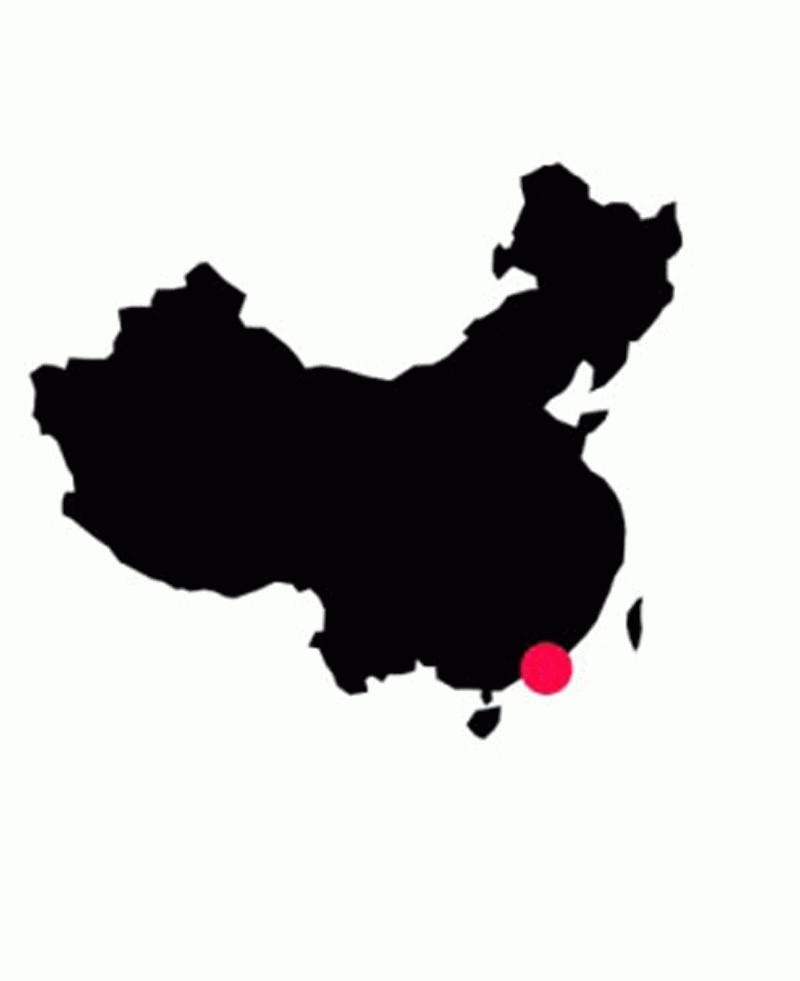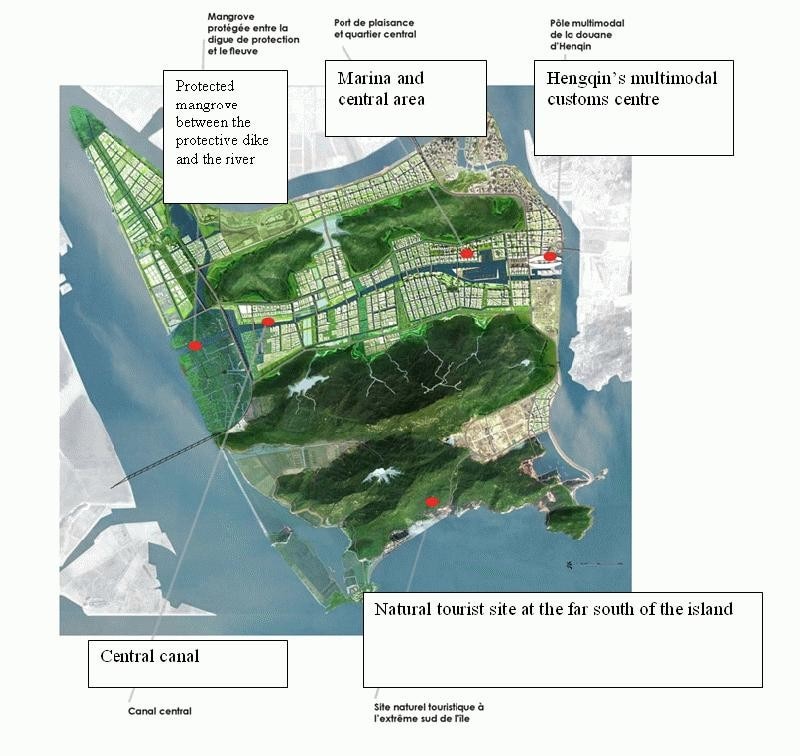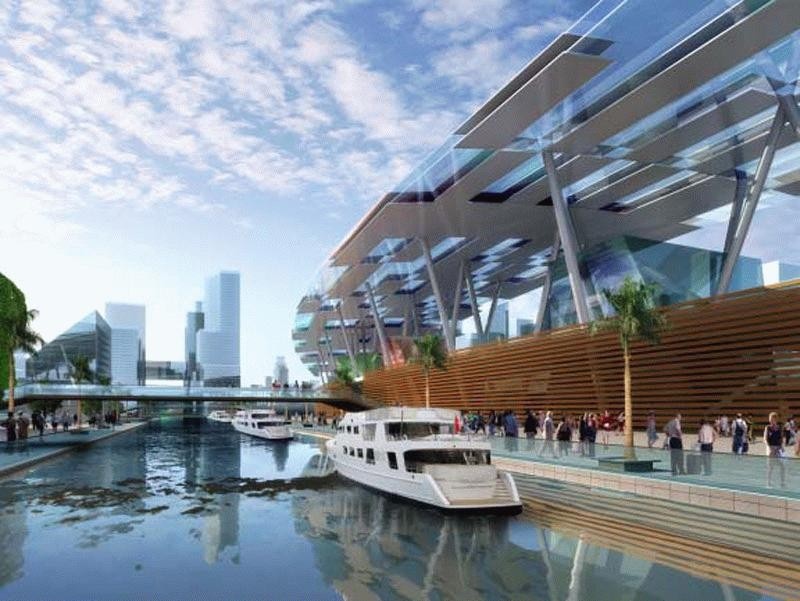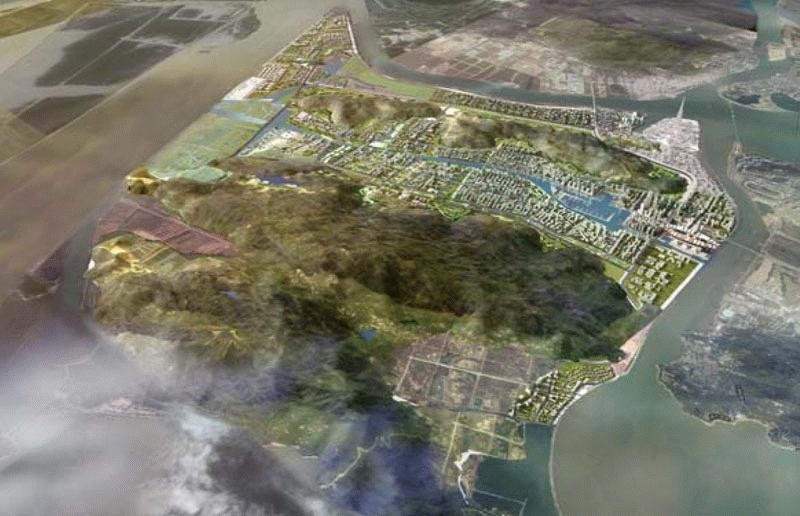The development of Hengqin Island was the subject of an international tender that has just been awarded to the French AMA architecture firm (Thierry Melot is the main associate of AMA architecture in Paris and Chairman of AMA China and Liguo Li is the Chief Executive Officer of AMA China), which has been present in China for a number of years. The bidding related to the planning of a 100 km² island with construction to be completed by 2020.
Six teams were allowed to bid in February 2010: Ama architecture/France; Nita/Holland; The Cox Group/Australia; SWA Group/USA; Qinghua Planning Institute/China; Scott Wilson Group plc/Great Britain. Competitors were informed of the results on 14 May 2010 after the presentation of the projects to the political authorities. Ama architecture (France) was selected. The Nita firm (Holland) ranked second, and The Cox Group (Australia), third.
The Winning Project: Shui Mai Or The Memory Of Water
Ama architecture’s urban planners took the area’s topography into account: the island is strongly impacted by its water network, which bears testimony to learned agricultural practices on land reclaimed from the sea, consisting in the patient constructing by hand of dikes during the 20th century.
The canal, basin and rice paddy grid is a heritage that must be protected. The water network was designed over time for agriculture, fish and oyster farming, and this resource composed of sea water, rain water and the distribution of this water is managed with precision and great skill. This secular intelligence is capable of shaping the foundation of the identity of the future city if it is taken into account: Ama architecture’s core idea was to preserve this heritage and design the city based on the “memory of water”. The new urban structure will live hand in hand with the memory of water: the project restores the network of agricultural canals and changes it into an urban traffic and sanitation system. The image and character of the city are totally immersed in the reminiscence of this water’s history.
The green belt supports the structure of the urban landscape, and is contiguous to the arterial and water systems. This third layer of the structure definitively entrenches the character of the city in its natural site. This foundation becomes the support mechanism for confirmed, legitimate modernity. All the ecosystems are linked to each other through a dense chain of large parks, squares, islets, banks and plant-covered overpasses. This linkage includes ecological corridors and intersections that are crucial to the global environmental coherence of the island. The mountains and their trees are protected.
The buildings are incorporated into the landscape structure of the south. They fit naturally within the geometry provided by the urban setting, with each urban lot becoming unique and finding its identity in the meeting between the components that result from the memory of water. Each area of the city will find an identity based on this geometry and the definition provided by the guidelines adopted: high tech industry, an international residential area, scientific research, a cultural centre, a service area and tourist sites.
Project owner:
Chinese Government’s “Plan for the Reform and Development of the Pearl River Delta” Commission and Zuhai Grand Hengqin Investment Company Ltd
Associate project owner pursuant to the bid:
HONGDA Engineer consulting corp. Ltd
Architects: Ama architecture Thierry Melot, Vincent Bertin, Philippe Fabre, urban planners
Surface: 100 km²
Cost: 25 billion yuan
Images, from above:
1-2 the site
3. Hengqin Island planning
4. the marina in the central quarter with a view of the opera house
5-6. the multimodal customs centre of Hengqin
7. the central canal seen from the mountain to the south







